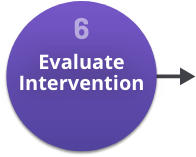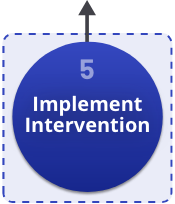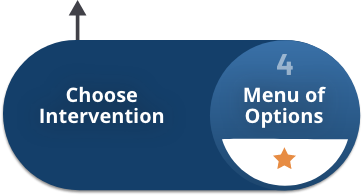Procedure: Implement Intervention
Coaching Process > Implement Intervention
There are four elements to supporting effective implementation of an intervention:
Monitoring Implementation
Teacher Self-Monitoring
One useful strategy for teachers to use as they implement an intervention is to self-monitor how well they are following the plan. The teacher can monitor if they are using a strategy as intended by using a list to check off whether important elements of an intervention were implemented. These important elements are listed for each strategy in the strategy overview.
The teacher can provide information on how well they felt they implemented the elements of the strategy each day. The teacher can also take notes on what they did well and areas of improvement.
Meet with the teacher after gathering a few days of self-monitoring data to determine whether they are effectively implementing the intervention. Problem solve as needed.
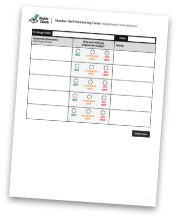
- If the teacher is forgetting to use a certain element, come up with ideas for how to help them remember (e.g., place a sticky note reminding to use behavior-specific praise on the workbook they are using to teach).
- If the teacher doesn’t feel confident in the skills, model the skill for them, or provide practice opportunities for them with you to help build these skills.
Observations & Feedback
Coach Observation and Performance Feedback

Gathering Frequency Data
Providing Performance Feedback

Reflection & Tips:
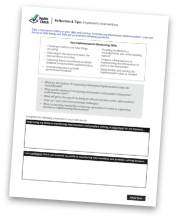
References to Other Relevant Resources:
Reinke, W., Herman, K., & Sprick, R. (2011). Motivational interviewing for effective classroom management: The classroom check-up. New York, NY: Guilford Press.
Sprick, R., Knight, J., Reinke, W. M., Skyles, T., & Barnes, L. (2010). Coaching classroom management: Strategies and tools for administrators and coaches. (2nd ed.). Eugene, OR: Pacific Northwest Publishing.


